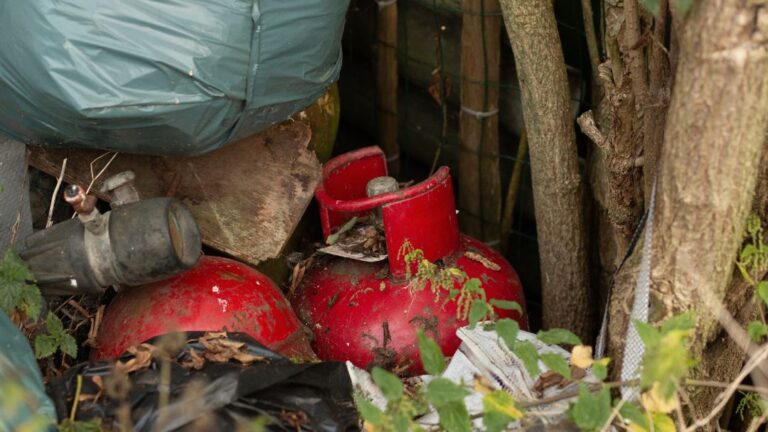Choosing the Perfect Drum Compactor for Your Needs: 5 Key Considerations
- Jonathan R.
- September 11, 2024
Table of Contents
Drum compactors are essential tools in waste management, helping to reduce the size of large containers like 55-gallon drums.
These machines are designed to crush and compact material, making waste disposal easier and more efficient.
A drum compactor can help streamline the process of dealing with industrial waste, hazardous materials, or general material waste.
Next, we’ll discuss the key factors to consider when choosing the right drum compactor for your needs. Let’s begin.
1. Type of Drum Compactor
First, you must consider what type of drum compactor you need for your operations. Here are the main ones:
Hydraulic Drum Compactors
Hydraulic drum compactors are some of the most powerful options available.
These compactors use a hydraulic cylinder to generate a powerful downforce for heavy-duty crushing operations.
The crushing force is strong enough to handle tough materials like steel and 55-gallon drums. They are ideal for industries that handle large volumes of waste, such as manufacturing or construction.
The hydraulic drum crusher compactor can also include features like a pressure relief valve for safety and fork pockets for easy transportation.
Some models, like the HDC 905 IDC 230V, are designed for maximum efficiency. They feature features like an interlock system and durable steel construction to ensure longevity.
These compactors are perfect for environments with heavy waste and material needs.
1.2 Pneumatic Drum Compactors
Pneumatic drum compactors use compressed air to create the necessary crushing force.
These machines are best suited for operations that require a more lightweight system.
Unlike hydraulic systems, pneumatic compactors often have a faster duty cycle, making them ideal for quick processing environments like recycling centers or small industrial sites.
With features like pneumatic input and smooth operation, models like the MTC PNU work well in indoor settings where space and noise are concerns.
A painted finish minimizes abrasion, and the double door latch ensures the drums stay securely in place during operation.
These compactors are perfect for working with excess liquid or less dense materials.
Manual Drum Compactors
Manual drum compactors can be a practical and affordable choice for smaller-scale needs.
These compactors rely on human power, so they’re best suited for light-duty jobs, such as crushing material waste in smaller facilities.
They work well in indoor environments and at room temperature, where power may not be readily available.
Despite their simpler design, manual compactors still have helpful features. They often have a crushing feature that can break down smaller drums and waste materials.
The compactors’ smooth surface and lightweight build make them easy to operate. They’re perfect for operations that don’t need a three-phase power supply but still require effective waste management.
2. Size and Capacity Requirements
When choosing a drum crusher compactor, consider the size of the drums you’ll be working with.
The most common drum sizes are 30-gallon and 55-gallon drums, but some compactors can handle even larger or smaller sizes. Make sure your compactor is compatible with the drum sizes you use most.
For example, a model like the HDC 905 IDC is designed to handle 55-gallon drums and offers an included drum compacting feature that ensures effective crushing.
The drum size directly impacts which compactor to choose. Larger drums require more crushing force, meaning a more powerful system like a hydraulic drum compactor may be necessary.
On the other hand, smaller drums may not need as much power, and a manual or pneumatic compactor could be sufficient.
Volume of Waste Produced
Another key factor is the amount of waste material your facility produces.
If you deal with high volumes of waste daily, you’ll need a compactor with a higher capacity and stronger compacting feature.
For instance, if you’re regularly processing a large number of 55-gallon drums, a more robust machine like the MTC PNU will help you manage your output efficiently.
On the other hand, if your facility only produces a smaller amount of waste weekly, you could opt for a less powerful model that doesn’t require heavy-duty use.
Estimating your waste volume will help you choose the best drum compactor for your daily or weekly needs.
3. Safety Features
Before purchasing a drum compactor for your operations, there are also some safety features to keep in mind:
Emergency Stop Mechanism
Safety is a top priority when operating a drum compactor.
One important feature to look for is an emergency stop mechanism. This should be easily accessible if something goes wrong during the crushing operation.
Having a quick-stop option can prevent accidents and keep operators safe. Models like the HDC 905 IDC often come with this feature to ensure compliance with safety regulations, making them a smart choice for busy environments.
3.2 Automatic Shut-off
Another essential safety feature is automatic shut-off, which helps protect both the operator and the machine.
If a malfunction occurs or the machine is overloaded, the automatic shut-off can stop the process immediately to prevent damage. This not only keeps your employees safe but also prolongs the lifespan of your compactor.
3.3 Protective Guards and Shields
Protective guards and shields are also vital safety features in drum compactors.
These barriers prevent injury by covering the machine’s moving parts during operation.
Look for compactors with steel construction and force-enabled designs that include sturdy shields. A well-built compactor with these features can help prevent accidents while handling heavy waste material.
By ensuring that your drum compactor includes safety features like an emergency stop, automatic shut-off, and protective guards, you can reduce the risk of injury and maintain a safer work environment.
4. Ease of Operation and Maintenance
When choosing a drum compactor, ease of use is a big factor.
Look for machines with simple, easy-to-understand control panels. Whether you’re operating a hydraulic drum compactor or a pneumatic one like the MTC PNU, user-friendly features matter.
Controls should be clearly labeled, allowing operators to start, stop, and adjust settings quickly without confusion. Machines with intuitive displays and buttons make the job easier, especially in high-volume environments where smooth operation is vital.
4.2 Maintenance Requirements
Regular maintenance is essential to keep your drum crusher compactor running smoothly.
This could include checking for wear and tear, lubricating moving parts, and inspecting safety features like force-enabled systems.
The maintenance tasks can vary depending on the model, such as those with built-in fork pockets. Some models may require more frequent upkeep, especially if they are used in an indoor room-temperature environment versus a harsher setting.
Maintenance tasks are straightforward but should be done regularly to ensure long-term performance. Machines with fewer moving parts or those designed with easy access points can simplify and speed up these tasks.
4.3 Durability and Build Quality
A well-built compactor will last longer and require less maintenance over time.
Look for compactors made from durable materials like steel construction, which will help the machine withstand daily use.
Pay attention to key components such as the compaction plate and seals, which can wear down with heavy use. Models with features like an aluminum drip pan or durable fork pockets offer extra durability for long-lasting performance.
Investing in a sturdy machine ensures you won’t have to replace it frequently, saving money in the long run.
5. Cost and Return on Investment
The initial cost of a drum compactor can vary depending on the type and features.
Hydraulic models, which are more powerful, tend to cost more upfront than manual or pneumatic compactors. For example, the MTC PNU might have a lower starting price than a heavy-duty hydraulic machine.
When comparing prices, balance the upfront cost with the machine’s features, durability, and ease of use. While a cheaper option may initially seem appealing, it might not offer the same long-term value as a higher-end model.
Operational Costs
Beyond the purchase price, there are ongoing operational costs to consider.
Electricity costs for running the machine, regular maintenance, and labor all contribute to the total cost of ownership. Machines with higher energy efficiency or requiring less frequent upkeep can help lower these costs.
For example, a drum crusher compactor used in an indoor room temperature environment may consume less energy than one used in a more demanding setting.
Understanding these factors helps you calculate the total cost of owning and operating the machine.
Long-term Savings
While the initial investment in a drum compactor might seem high, the long-term savings can be significant.
Effective compaction reduces the volume of waste, leading to fewer waste disposal pickups and lower costs. These savings can add up quickly in industries that handle large volumes of garbage.
A well-built compactor with a vital compacting feature can reduce waste management costs, resulting in a positive return on investment (ROI) over time.
For instance, in a manufacturing setting that processes hundreds of 55-gallon drums, the cost savings on waste disposal can make up for the machine’s price within a year or two.
The right drum compactor, with built-in fork pockets and safety features, can improve efficiency and provide long-term financial benefits for your business.
Conclusion
Selecting the right drum compactor is all about understanding your unique requirements.
You’ll enjoy long-term cost savings and smoother waste management with the right choice.
CTI Safety Storage is here to help you make the best decision and find the perfect drum compactor to streamline your operations.
Ready to get started? Contact CTI Safety Storage today for expert guidance!

Jonathan Reed
Jonathan Reed specializes in writing in-depth, data-driven content on industrial waste management, regulatory compliance, and environmental sustainability. With expertise in hazardous waste disposal, OSHA guidelines, and waste reduction technologies, he provides actionable insights for businesses navigating complex waste management challenges.



